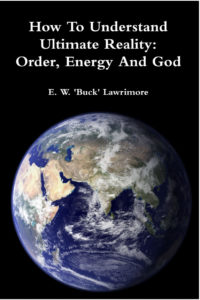The Reality of Energy – A Widely Accepted Reality
Of the three components of Ordergonics, the reality of energy is certainly the most widely accepted. Anyone who has studied modern science knows how essential the concept of energy is to many different areas of science.
As we noted earlier, Einstein’s formula E=mc2, so familiar to most educated people in the world today, specifies the interchangeability of matter (actually mass) and energy. When a relatively large quantity of mass is rapidly converted into energy, the result is usually a nuclear explosion as with an atomic bomb, or when the conversion is slower and controlled, the resulting heat energy can be converted into steam and electricity in a nuclear power plant.
Energy is a very common concept in everyday life. We hear people say, “You have a lot of energy today” or “I just don’t have the energy for that.” We can sense our body’s own energy level. When we are tired, our energy feels low. When we’ve had lots of rest and are in good physical shape, our energy feels higher.
Energy has a number of different meanings. Its root is the Greek word energeia meaning activity. Its primary definition in Webster’s is “the capacity for vigorous activity.” In classical physics, energy is commonly thought of as “the capacity to do work,” especially the capacity to move something or raise the heat of something.
Various Forms Of Energy
One form of energy is potential energy. The common example for this is water at a high elevation which releases energy when it falls, and can be used to turn a waterwheel or generate hydroelectric power.
Another form is thermal energy, which is related to heat. Electromagnetic energy is radiant energy in the form of visible light, infrared, ultraviolet, radio waves, television waves, cosmic rays and other frequencies.
Max Planck’s formula e=hf, almost as famous and important as Einstein’s E=mc2, states that electromagnetic energy is equal to hmultiplied by the frequency. h is the symbol for Planck’s constant, equal to the number 663 divided by 10,000,000,000,000,000,000,000,000, or as it is commonly written, 663 X 10-25 erg sec. An erg second is the amount of energy needed to raise a milligram of mass one centimeter in one second. That is doing work, but at a very small level! Planck’s constant applies not only to electromagnetic radiation but to the orbits of electrons, the size of atomic particles – everything in the universe, since everything is composed of energy. All physical entities vary in orderly steps.
The Conservation Of Energy
Energy as the capacity for vigorous activity has been around for thousands of years. But only in the 19th Century did scientists begin to accept energy as a common umbrella term for a phenomenon with many different ramifications. We noted in Chapter 2 that electricity was the first undoing of Newtonian mechanics. It was also the first major clue of the all-pervasive nature of energy.
As the recognition of energy became more widespread, various experimenters realized that all different types of energy are interchangeable. Chemical energy could be converted (through the Voltaic battery) into electric current which generated heat as well as a magnetic field. Biochemical energy which causes a frog’s leg to jump was seen as a form of electrical energy. And so with one form of energy being converted into another, the principle of conserving energy became apparent. And what emerged became known as the Law of Conservation of Energy: Energy can neither be created nor destroyed, it can only be converted into other forms of energy.
Another way of looking at this is, because the entire universe and everything in it is made of energy, energy has nowhere to go – it just becomes converted into another form.
I could go on at great length about the reality of energy, but I do not think that is necessary. If you are sufficiently educated to be reading this book, you most likely accept the all-pervasive nature of energy as a fundamental component of reality. That is nothing new.
What is new is the concept that order is just as real as energy. We introduced this fundamental tenet of Ordergonics in the previous chapter. Now let us examine it in more detail.
GO TO CHAPTER: 1 2 3 4 5 6 7 8 9 10 11 12 13 14 15 16 17 18 19
